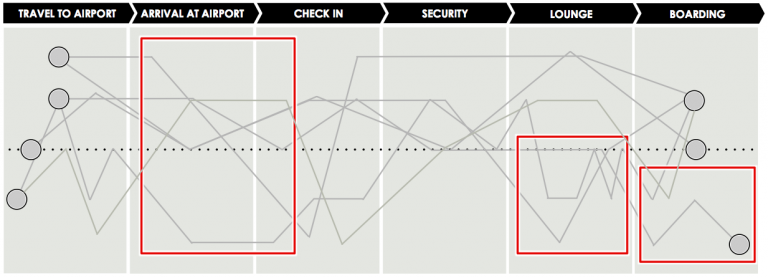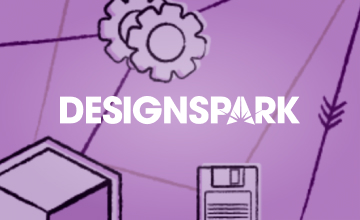Bunnyfoot wanted to research customer experiences at airports, specifically the departure journey. We wanted to learn where customers experience ‘pain points’ – those notable moments of frustration, or anxiety, or any other negative emotion caused by the services and systems they interact with.
What our client wanted
- Develop an understanding of the six different stages in an airport journey: (1) travelling to the airport (2) arriving at the airport (3) check in/bag drop off (4) security (5) departure lounge (6) reaching and boarding the plane
- Discover the pain points that can arise along the journey to boarding the plane
- Insight into the use of new mobile ethnographic research tools

What we delivered
- Photographic evidence of each customer journey using the Narrative Clip camera, from the moment they left home through to boarding the plane
- Diary of touch points using the Experience Fellow mobile app, to document customer experiences as they happened
- Experience maps, insights and recommendations on all six customer journeys from home to boarding
- Insights into potential applications of Internet of Things (IoT) technologies, such as providing customers with personalised, context-specific notifications, and creating personalised and targeted services that customers need and want

Experience map comparison
By overlaying and comparing all of the experience maps we were able to identify three stages in the departure journey that caused a significant negative effect on the customer experience:
- Arrival at the airport (and check-in): customers need real-time, personalised, contextual information – such as check-in locations and directions within the terminal, walking distances, current queue times, etc.
- Departure lounge: customer expectations need to be managed with real-time, personalised, contextual information – e.g. their boarding gate, what shops are available, the transit time, and advanced warning of queues.
- Boarding gate: customers need to be notified of any boarding issues before they travel to the gate, such as their flight being busy and that they will need to check in their hand luggage. Customer experiences can also be improved through personalised entertainment and information – e.g. downloadable content, games, and tourist attractions at their destination.

The results
Pain points mount up. Their compound effect can lead to an overall negative experience, which can be to the detriment of customer loyalty, repeat business, and they can seriously effect word of mouth and brand reputation. By researching customer experiences and identifying pain points you can make informed design decisions on how to address them and improve the overall experience.
Airports and airlines may be refining their customer experiences in the short-term, but in the long-term they will need to create holistic, long-term service strategies; to collate data on customers from multiple sources and to create personalised, targeted experiences that they actually need and want.







